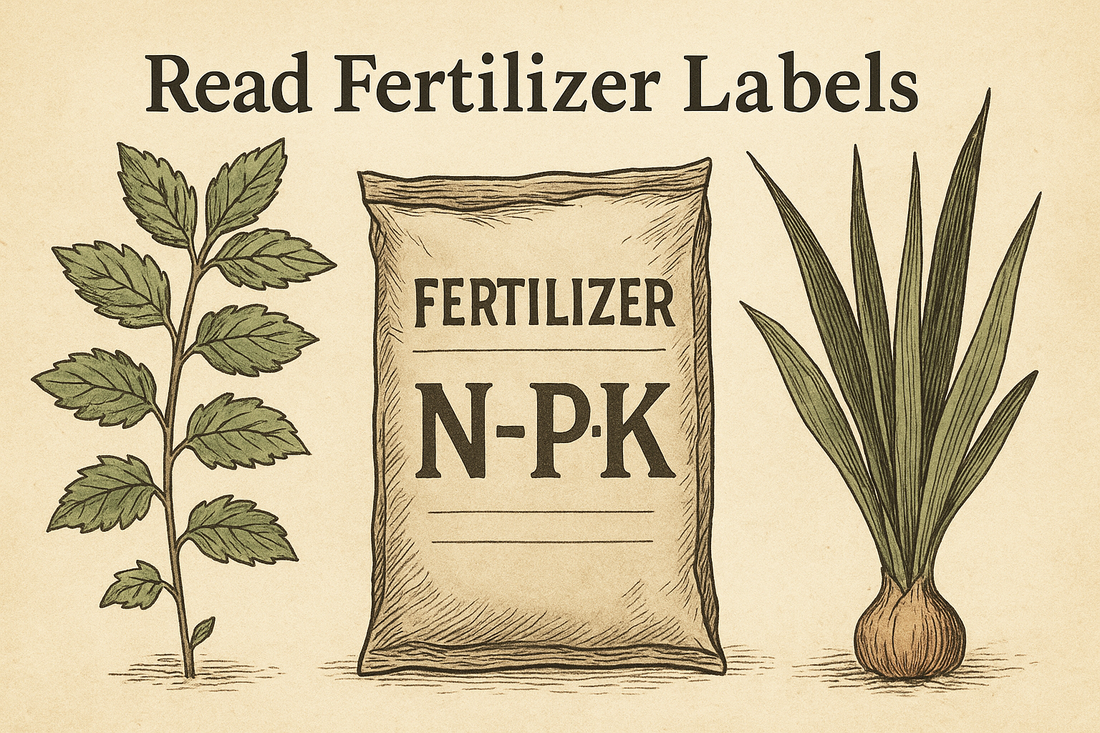
Decoding Fertilizer Labels: A Practical Guide for Smarter Feeding
Why label literacy saves time and money
Many gardeners load high-analysis blends into the cart simply because the numbers look impressive. Concentration in the bottle counts for little if nutrients stay locked in the soil or burn sensitive roots. Reading the label lets you decide whether each ingredient earns its place in the mix.
Start with the guaranteed analysis panel
Every fertilizer sold in North America lists macro and micro percentages by weight:
- Total nitrogen (N) – fuels green growth and chlorophyll. Delivered as ammoniacal, nitrate, or amino-nitrogen; each behaves differently in soil.
- Soluble potash (K₂O) – strengthens cell walls and helps plants manage heat stress.
- Available phosphate (P₂O₅) – supports root initiation and seedling vigor, yet often remains plentiful in most garden soils.
- Trace elements – iron, manganese, zinc, boron, and others; listed in fractions of one percent.
Salt index and carrier type rarely appear in the table, yet they determine whether roots can absorb the nutrients without injury.
Why GardenIQ omits phosphorus in most blends
Phosphorus binds tightly to soil particles. Typical garden beds test high after years of granular feeds and compost. Adding more phosphate:
- Blocks iron and zinc uptake; leaves yellow even while you feed.
- Leaches into runoff and fuels algae blooms in local waterways.
By focusing on nitrogen, potassium, and chelated micros moved through Nutrx™, GardenIQ delivers what plants still lack without piling on excess salts.
Even with “small” numbers, the chelated iron in Dark Venom greens turf inside a week; High Yield’s protein nitrogen builds leaf mass at a pace the root system can support.
Three missteps to avoid when comparing products
- Trusting only the front panel. “25-5-10” tells concentration, not availability. A 3-0-5 liquid with Nutrx™ can outperform a high-salt 25-5-10 granular in both color and stress resistance.
- Doubling rates to compensate for slow response. If a product is poorly chelated, adding more raises salinity and blocks uptake further.
- Mixing competing carriers. Iron sulfate combined with high-phosphate feeds forms insoluble iron phosphate. Always check compatibility charts before tank mixing.
A fertilizer label is a roadmap, not a marketing poster. Once you know where to look—and why GardenIQ chooses fewer, better-chelated ingredients—you can match any crop to the nutrition it truly needs, skip what it doesn’t, and stop pouring money into excess salts.
